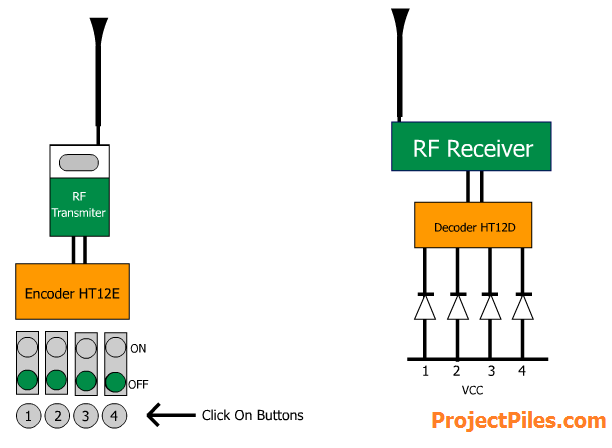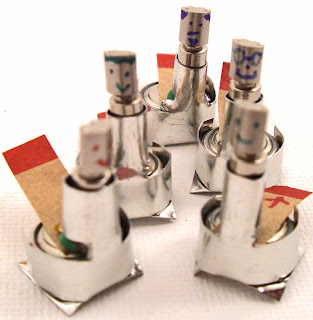INTRODUCTION:
The main purpose of “I2C BASED AUTOMATED PERIODIC BELL” is to give a ring according to our required time. Instead of operating bell manually, the task will be performed by automation method. In order to automate the bell here, we are using I2C protocol. CLICK HERE TO DOWNLOAD THE COMPLETE AUTOMATED BELL PROJECT
The age of automation started in the eighteenth century when machines began to take over jobs that had previously been performed by human being. If we operate the bell manually, there occurs some time delay and also it is difficult task to perform regularly. So, in order to avoid such kind of problems we are going for automation.
I2C is a bus developed in 1980’s by Philips Semiconductors to connect integrated Circuits (ICs). The standard I2C bus may operate as a multi master bus: Multiple ICs may be connected to the I2C bus and each one may act as a master by initiating a data transfer. Serial 8-bit oriented, bi-directional data transfers may be made at up to 100 kbit/s in a standard mode or up to 400 kbit/s in a fast mode. The I2C bus may include two bus lines, a serial data line (SDL) and a serial clock line (SCL).
The main components involved in the project are DS1307, ULN2003,relay,LCD, LED, Micro controller (AT89C51). The Microcontroller is used as Master device and DS1307 (real time clock) is used as slave device. By providing communication between these two devices the bell is set for ring. The communication between these two devices is established by means of I2C bus.
At first the bus is initiated by the master, by transferring START bit, when the SCL line is HIGH. Then address is transferred on SDA line by making the SCL line as LOW, and then followed by STOP bit when the SCL line is HIGH. Slave device after receiving the data correctly, sends an acknowledgement to master device informing that the data is received, according to the clock generated by the master. Then
master device retrieves the data from the particular location and displays it on the LCD.
DESCRIPTION:
Features:
• Compatible with MCS-51st products.• 4 Kbytes of in-system reprogram able flash memory.
• Fully static operation: 0 Hz to 24 MHz.
• Three-level program Memory Lock.
• 128*8-Bit Internal RAM.
• 32 Programmable I/O Lines.
• Two 16-Bit Timer/Counters.
• Six Interrupt sources.
• Programmable Serial Channel.
Idle mode:
In idle mode, the CPU puts itself to sleep while all the on chip peripherals remain active. The mode is invoked by software. The content of the on-chip RAM and all the specific functions registers remain unchanged during this mode. The idle mode can be terminated by any enabled interrupt or by a hardware reset. It should be noted that when idle is terminated by a hardware reset, the device normally resumes program execution, from where it left off, up to two machine cycles before the internal reset algorithm takes control. On-chip hardware inhibits access to internal RAM in this event, but access to the port pins is not inhibited. To eliminate the possibility of an unexpected write to a port pin when Idle is terminated by reset, the instruction following the one that invokes Idle should not be one that writes to port pin or to external memory.Power-down Mode
In the power –down mode ,the oscillator is stopped ,and the instruction that invokes power –down is the last instruction executed .The on-chip RAM and Special Function Registers retain their values until the power –down mode is terminated. The only exit from power –down is a hard ware reset .Rest redefines the SFRs but does not change the on-chip RAM .The reset should not be activated before VCC is restored to its normal operating level and must be held active long enough to allow the oscillator to restart and stabilize.
CONCLUSION:
The “I2C based automated periodic bell” designed using micro controller AT89C51 has found to be useful in several places for accurate alarming. Periodically ringing has been achieved by using modern technology protocol called I2C protocol. In this, communication is successfully achieved between master and slave device. Replacing I2C protocol by SM-bus, CAN and other advanced protocols, better accurate results can be achieved.Microcontroller’s full capacity can be utilized by adding more controls to the system. The capacity of number of slaves depends up on the communication bus need.
This project can be extended by making the LCD to display not only date, day, time, but also the period that is going on at present, in school, colleges. This can also be used in churches, temples, industries.


























.jpg)
.jpg)
.jpg)

